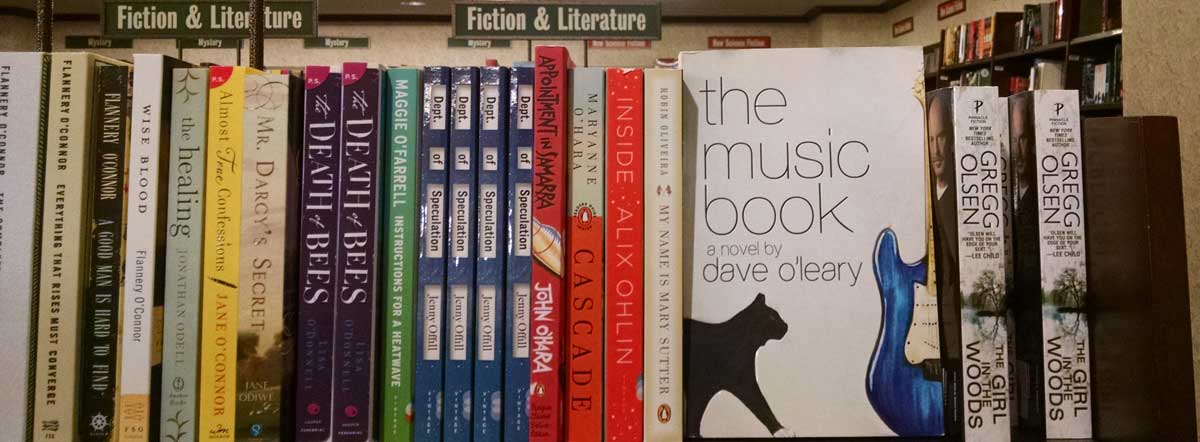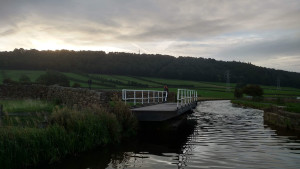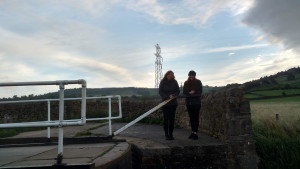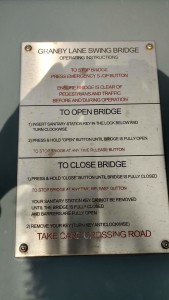We pushed off in the morning and went east from Silsden towards the Leeds end of the damage (#leedstoliverdamage), and there were no more problems with the wind and no more moments of danger. The swing bridges cooperated too and we passed easily down the canal with Linda and Allison giving me a break on a few of them so I could rest a bit. I had a cup of coffee thus while they dealt with the bridge key and the pushing to open and close the bridges. It was lovely. The sun wasn’t quite out and it was a little chilly, but that didn’t matter. All was good. The cows were mooing and the sheep were bleating and I had a second cup of coffee. It was shaping up to be a nice day.
One thing of note regarding the swing bridges though was that some of them were electronic and operated at the push of a button. These were, at first glance, simple enough to open. Insert the bridge key into the control panel, turn it clockwise, press the Open Button. This would cause the road barriers to swing or drop to block the road and the bridge to swing slowly open. Nothing to it. The catch was that once the button was pushed you were not to stop pressing UNTIL THE BRIDGE WAS FULLY OPEN. This was very important because releasing the button too soon would cause the bridge to stop. For emergencies that was great and was certainly the desired behavior, but an accidental release of the button would fuck everything up and it was an unrecoverable operation. The bridge would be stuck in whatever part of the process it was in. This could be mostly open, a little bit open, or somewhere in between. It could be closed but with the road barriers still doing their thing of blocking the road. Either drivers wouldn’t be able to get through or boats or both. And it would take at least two hours—and up to twenty-four—for the proper authorities to rectify the situation. Better not let your finger slip.
These bridges, thankfully, came with detailed instructions, and so long as one was careful, a bridge shutdown and the humiliation that came with it could be avoided. For instance, one such bridge near a lovely pub called the Marquis of Granby—a marked spot on our map for the return trip—had very specific instructions right down to the point of how the key should be taken care of.
“1. Inset sanitary station key in the lock below and turn clockwise.”
Sanitary?
Our key was anything but sanitary. It had been dropped on the floor of our boat, in the mud and the grass and whatever else was on the ground near the swing bridges, including the bridges joining plots of farmland. These bridges were used by livestock, which often left tracks in something other than mud. Still, condition of the key aside, I inserted it, turned, and pushed the Open Button, and just like all the other electronic swing bridges, this activated the road barriers and then opened the bridge. Piece of cake. Just don’t let your finger slip.
A little further on we came to another electronic swing bridge. I got out to handle this one, and with key in hand I went to the control panel and looked in both directions to make sure no cars were coming. All was clear so I inserted the key, turned it clockwise, and pressed the Open Button. There were low hums from the bridge like the mechanics inside were readying themselves for the opening sequence, but nothing happened. There was no movement. The road barriers did not release to block the road. The bridge stayed put. Nothing.
Shit.
I already had my thumb on the Open Button. I was pressing and not letting up as I’d been instructed, but still nothing was happening. I tried pressing a little harder. Nothing. There were some people walking along the canal, and they stopped to watch the bridge open even though it wasn’t doing that at all. Maybe they were watching me for entertainment, wondering if I’d screw it up. Maybe that was a thing in these parts as there were plenty of amateur canal boaters. I waited a few more seconds. Still nothing. A couple cars crossed making me increasingly concerned. What if it started opening and the road barriers still hadn’t released to block the road. We’d be in a mess then. A couple with a dog crossed the bridge. A few more stopped to watch me or the bridge or both. Another car crossed. Finally, I looked at the instructions.
1. Move road barriers to their closed and locked positions.
2. Insert key and turn clockwise…
And there it was. The road barriers for this bridge were manual even though the rest of it was electronic.
It helps to read the instructions.
I was still in a bind though. I had already inserted and turned the key. I had my thumb on the Open Button, and I was being very careful not to let it up. I had no choice though but to do it and see what happened so I lifted my thumb, turned the key back, and pulled it out. The bridge stopped humming but did nothing else. Another car, a Jaguar this time, crossed the bridge. I called for help, “Allison.”
“What?”
“These are manual.”
“What?”
“These are manual. I need help. Two people.” Allison and Kris came running. “We need to close the barriers.”
‘OK.”
Kris went to the other side of the bridge, Allison stayed on my side. They unlatched the barriers and walked them across to block the road. A couple of cars pulled up on the far side and waited. Kris locked her barrier in place. Allison did the same. I put the key in again and turned it and paused for a second. Hopefully, I hadn’t already broken the damn thing. If I had though, at least there was a pub nearby—there always was in England—but that seemed a small consolation for the hassle it would otherwise cause. Hell, I might even be banned from swing bridges and pubs on the whole of the canal, maybe even throughout England. There’d be a picture of me in the offices of canal boat renters and on the control panels of the swing bridges themselves. “Do not let this individual operate a swing bridge under any circumstance.”
A few more cars pulled up on both sides now. There were more pedestrians watching and waiting. It was time. I pushed the Open Button. The humming started again, but the bridge did not move. One second. Two seconds. Three. Four. Nothing. There were about six cars now on the other side of the bridge and roughly the same number on my side. There were some ducks gathered on the near side of the canal too. Perhaps they were wondering why it was taking so long, wondering—as ducks do-—when the boat on the other side of the bridge would make its way towards them. Five. Six. Seven. And then finally, finally, there was the click of a latch releasing. The bridge inched up just a bit, paused for a second, then started to swing left. It was opening.
A few people walked off going our way down the canal towards Leeds. A few more went the other way. The bridge was opening. Nothing left to see here. The ducks swam away too. Our boat started to come through, and I would, after all, not be banned henceforth from the canal. Not yet anyway. We still had locks to navigate and wind and rain to worry about. There might even be boat damage to consider, if I decided to have another go at manning the tiller. I wasn’t sure on that yet. I



